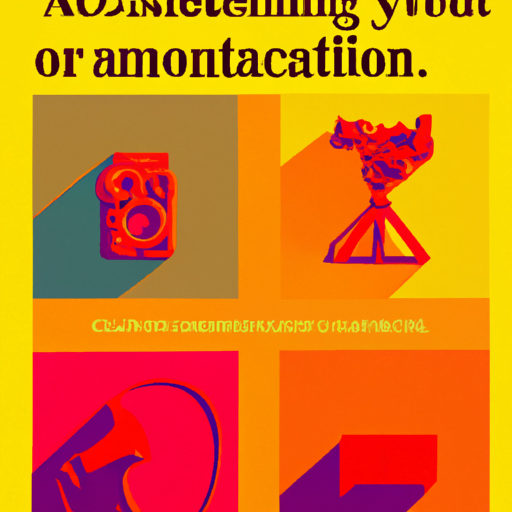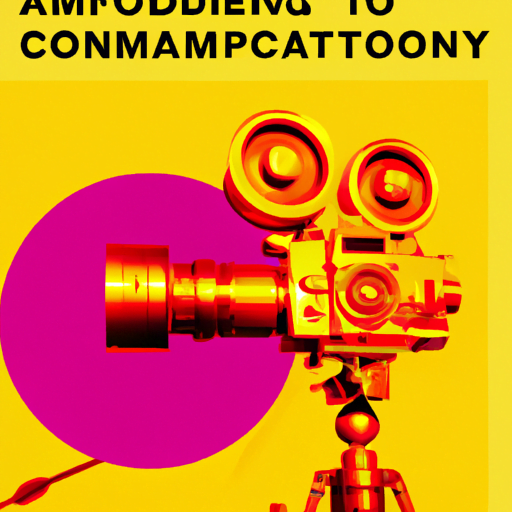
-
Table of Contents
- Poster Design: Captivating Communication in a Single Frame
- The History of Poster Design
- The Key Elements of Poster Design
- 1. Typography
- 2. Color
- 3. Imagery
- 4. Composition
- 5. White Space
- The Impact of Poster Design
- 1. Promoting Events and Products
- 2. Raising Awareness
- 3. Creating Brand Identity
- Case Studies: Impactful Poster Designs
- 1. “We Can Do It!” by J. Howard Miller
- 2. “Keep Calm and Carry On” by the British Government
- Conclusion
Poster Design: Captivating Communication in a Single Frame

Posters have been a powerful medium of communication for centuries. From promoting events and products to raising awareness about social issues, posters have the ability to captivate audiences and convey messages in a single frame. In this article, we will explore the art of poster design, its history, key elements, and the impact it can have on the viewer.
The History of Poster Design
Posters have a rich history that dates back to the 19th century. The invention of lithography, a printing technique that allowed for mass production of colorful and detailed images, revolutionized the world of poster design. Artists like Jules Chéret and Henri de Toulouse-Lautrec embraced this new medium and created iconic posters that adorned the streets of Paris.
During the early 20th century, the art movements of Art Nouveau and Art Deco influenced poster design. Art Nouveau posters, characterized by flowing lines and organic forms, aimed to capture attention through their intricate designs. On the other hand, Art Deco posters embraced geometric shapes and bold colors to create a sense of modernity and sophistication.
In the mid-20th century, the rise of graphic design as a profession further propelled the evolution of poster design. Designers like Saul Bass and Paul Rand brought a fresh approach to poster design by incorporating elements of minimalism and abstraction. Their work showcased the power of simplicity and effective visual communication.
The Key Elements of Poster Design
Creating a captivating poster requires careful consideration of various elements. Let’s explore some of the key elements that contribute to the success of a poster:
1. Typography
Typography plays a crucial role in poster design. The choice of fonts, their size, and arrangement can greatly impact the overall message and visual appeal of the poster. Bold and legible fonts are often used for headlines, while more subtle fonts are employed for body text. Experimenting with different typefaces can help create a unique and engaging design.
2. Color
Color is a powerful tool in poster design. It can evoke emotions, create visual hierarchy, and attract attention. Understanding color theory and its psychological effects is essential for selecting the right color palette. Contrasting colors can make elements stand out, while harmonious colors can create a sense of balance and unity.
3. Imagery
Images are the visual anchors of a poster. They can convey messages, set the mood, and grab the viewer’s attention. Choosing the right imagery that aligns with the message and target audience is crucial. High-quality and relevant photographs or illustrations can make a poster more impactful and memorable.
4. Composition
The arrangement of elements within a poster is known as composition. A well-balanced composition ensures that the viewer’s attention is directed towards the most important information. The rule of thirds, leading lines, and visual hierarchy are some techniques that can be employed to create an effective composition.
5. White Space
White space, also known as negative space, refers to the empty areas in a poster. It helps create breathing room for the elements and enhances their visibility. Strategic use of white space can make a poster look clean, organized, and visually appealing.
The Impact of Poster Design
Effective poster design has the power to leave a lasting impact on the viewer. Let’s explore some ways in which posters can make a difference:
1. Promoting Events and Products
Posters are widely used to promote events, such as concerts, exhibitions, and festivals. A well-designed poster can generate excitement, attract a larger audience, and increase ticket sales. Similarly, posters are also used to advertise products and services. A visually appealing poster can grab the attention of potential customers and drive sales.
2. Raising Awareness
Posters have been instrumental in raising awareness about social issues and important causes. They can educate the public, spark conversations, and inspire action. For example, posters advocating for environmental conservation or promoting equality have played a significant role in mobilizing communities and bringing about positive change.
3. Creating Brand Identity
Posters are an effective tool for building brand identity and recognition. Consistent use of colors, typography, and imagery across different posters can help establish a strong visual identity for a brand. This, in turn, enhances brand recall and fosters a sense of trust and familiarity among consumers.
Case Studies: Impactful Poster Designs
Let’s take a look at some real-world examples of impactful poster designs:
1. “We Can Do It!” by J. Howard Miller
The iconic poster featuring Rosie the Riveter, created by J. Howard Miller during World War II, has become a symbol of female empowerment. The poster was designed to encourage women to join the workforce and support the war effort. Its strong imagery and bold typography continue to inspire and resonate with audiences today.
2. “Keep Calm and Carry On” by the British Government
Originally designed in 1939 as a motivational poster during World War II, the “Keep Calm and Carry On” poster has become a cultural phenomenon. Its simple design, featuring a crown and a bold sans-serif font, has been widely parodied and adapted to various contexts. The poster’s message of resilience and determination continues to resonate with people around the world.
Conclusion
Poster design is a powerful form of communication that can captivate audiences and convey messages in a single frame. By carefully considering elements such as typography, color, imagery, composition, and white space, designers can create impactful posters that leave a lasting impression. Whether it’s promoting events, raising awareness, or building brand identity, posters have the ability to make a difference in the world. So, the next time you see a captivating poster, take a moment to appreciate the thought and creativity that went into its design.
